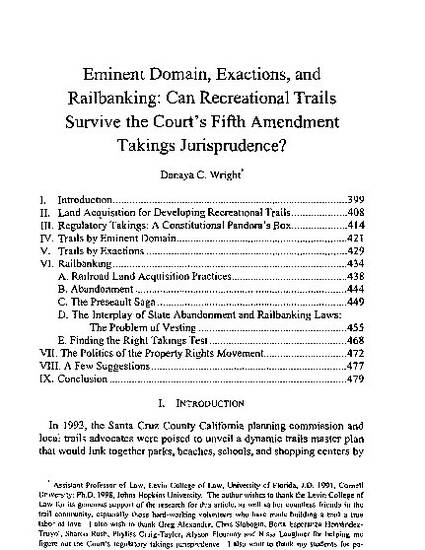
This article attempts to locate the legal aspects of recreational trail development within the increasingly powerful property rights movement. The most complex result of this rising property rights rhetoric is a clear shift in constitutional takings doctrine to be more sympathetic to landowners' arguments. Thus, the interplay of takings decisions and trails development will be the focus of most of this article.
Part II provides a brief account of the legal structure of governmental land use controls and the current state of takings jurisprudence to form a basic background for the different ways in which recreational trails have been developed. Part III gives a brief summary of the Supreme Court's regulatory takings jurisprudence and the way in which it identifies the property interests and the mechanisms for restraining governmental excess. Parts IV through VI examine three of the particular legal avenues of trail development currently in use: eminent domain, developer exactions, and the federal railbanking program. Part VII looks more closely at the politics of the property rights movement and the legal tactics used to derail trail projects. In the end, although all three methods of obtaining the land necessary for trails are legal, the necessity of dealing with the heightened emotions and political pandering that trail projects engender requires a more subtle approach. Part VIII suggests a number of different ways to enhance the political climate in favor of trails.
